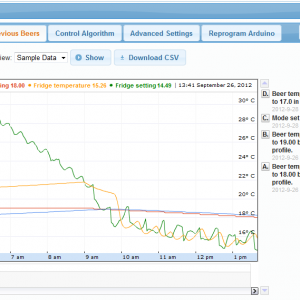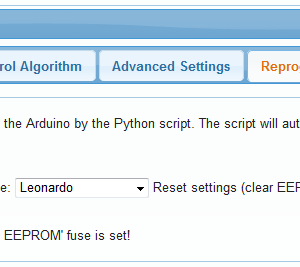Python Serial Read Hex
The PSF. The Python Software Foundation is the organization behind Python. Become a member of the PSF and help advance the software and our mission.


Convert string to hex Python recipe I should ve read the original post more closely. Even though modern Python implementations have. encode and. decode.
Pyserial 3.0.1. Downloads Package Documentation. Python Serial Port Extension for Win32, OSX, Linux, BSD, Jython, IronPython. File Type Py Version Uploaded on Size;.
Introduction. MinimalModbus is an easy-to-use Python module for talking to instruments slaves from a computer master using the Modbus protocol, and is.
Files and I/O. All programs need to , make sure you carefully read the Python documentation on the subject. You want to read and write data over a serial port.

18.14. binascii Convert between binary and ASCII The binascii module contains a number of methods to convert between binary and various ASCII-encoded binary.
The binascii module contains a number of methods to convert between
binary and various ASCII-encoded binary representations. Normally, you will not
use these functions directly but use wrapper modules like uu,
base64, or binhex instead. The binascii module contains
low-level functions written in C for greater speed that are used by the
The binascii module defines the following functions:
Convert a single line of uuencoded data back to binary and return the binary
data. Lines normally contain 45 binary bytes, except for the last line. Line
data may be followed by whitespace.
Convert binary data to a line of ASCII characters, the return value is the
converted line, including a newline char. The length of data should be at most
Convert a block of base64 data back to binary and return the binary data. More
than one line may be passed at a time.
Convert binary data to a line of ASCII characters in base64 coding. The return
value is the converted line, including a newline char. The newline is
added because the original use case for this function was to feed it a
series of 57 byte input lines to get output lines that conform to the
MIME-base64 standard. Otherwise the output conforms to RFC 3548.
binascii.a2b_qp string, header
Convert a block of quoted-printable data back to binary and return the binary
data. More than one line may be passed at a time. If the optional argument
header is present and true, underscores will be decoded as spaces.
binascii.b2a_qp data, quotetabs, istext, header
Convert binary data to a line s of ASCII characters in quoted-printable
encoding. The return value is the converted line s. If the optional argument
quotetabs is present and true, all tabs and spaces will be encoded. If the
optional argument istext is present and true, newlines are not encoded but
trailing whitespace will be encoded. If the optional argument header is
present and true, spaces will be encoded as underscores per RFC1522. If the
optional argument header is present and false, newline characters will be
encoded as well; otherwise linefeed conversion might corrupt the binary data
Convert binhex4 formatted ASCII data to binary, without doing RLE-decompression.
The string should contain a complete number of binary bytes, or in case of the
last portion of the binhex4 data have the remaining bits zero.
Perform RLE-decompression on the data, as per the binhex4 standard. The
algorithm uses 0x90 after a byte as a repeat indicator, followed by a count.
A count of 0 specifies a byte value of 0x90. The routine returns the
decompressed data, unless data input data ends in an orphaned repeat indicator,
in which case the Incomplete exception is raised.
Perform binhex4 style RLE-compression on data and return the result.
Perform hexbin4 binary-to-ASCII translation and return the resulting string. The
argument should already be RLE-coded, and have a length divisible by 3 except
Compute the binhex4 crc value of data, starting with an initial crc and
Compute CRC-32, the 32-bit checksum of data, starting with an initial crc. This
is consistent with the ZIP file checksum. Since the algorithm is designed for
use as a checksum algorithm, it is not suitable for use as a general hash
print binascii.crc32 hello world
crc binascii.crc32 world, crc 0xffffffff
To generate the same numeric value across all Python versions and
platforms use crc32 data 0xffffffff. If you are only using
the checksum in packed binary format this is not necessary as the
return value is the correct 32bit binary representation
Changed in version 2.6: The return value is in the range -2 31, 2 31-1
regardless of platform. In the past the value would be signed on
some platforms and unsigned on others. Use 0xffffffff on the
value if you want it to match Python 3 behavior.
Changed in version 3.0: The return value is unsigned and in the range 0, 2 32-1
Return the hexadecimal representation of the binary data. Every byte of
data is converted into the corresponding 2-digit hex representation. The
resulting string is therefore twice as long as the length of data.
Return the binary data represented by the hexadecimal string hexstr. This
function is the inverse of b2a_hex. hexstr must contain an even number
of hexadecimal digits which can be upper or lower case, otherwise a
Exception raised on errors. These are usually programming errors.
Exception raised on incomplete data. These are usually not programming errors,
but may be handled by reading a little more data and trying again.
Support for RFC compliant base64-style encoding in base 16, 32, and 64.
Support for the binhex format used on the Macintosh.
Support for UU encoding used on Unix.
Support for quoted-printable encoding used in MIME email messages.
18.14. binascii — Convert between binary and ASCII — Python 2.7.11 documentation